Transmission between neurons (L4)
1/14
There's no tags or description
Looks like no tags are added yet.
Name | Mastery | Learn | Test | Matching | Spaced |
|---|
No study sessions yet.
15 Terms
How do neurons send messages?
Via synaptic transmission (a chemical process).
- Neurotransmitters are released from one neuron and attach to another.
- Initiates a reaction that results in postsynaptic potentials.
- Presynaptic neuron releases neurotransmitter.
- Postsynaptic neuron receives neurotransmitter.
Synapse
The junction between two neurons (terminal buttons and membrane).
- One neuron connects to 50,000 others.
- Synaptic vesicles: some made in the soma and transported to button; others made by recycling from those that have already released neurotransmitter.
- Synaptic cleft: gap between the neurons (20nm).
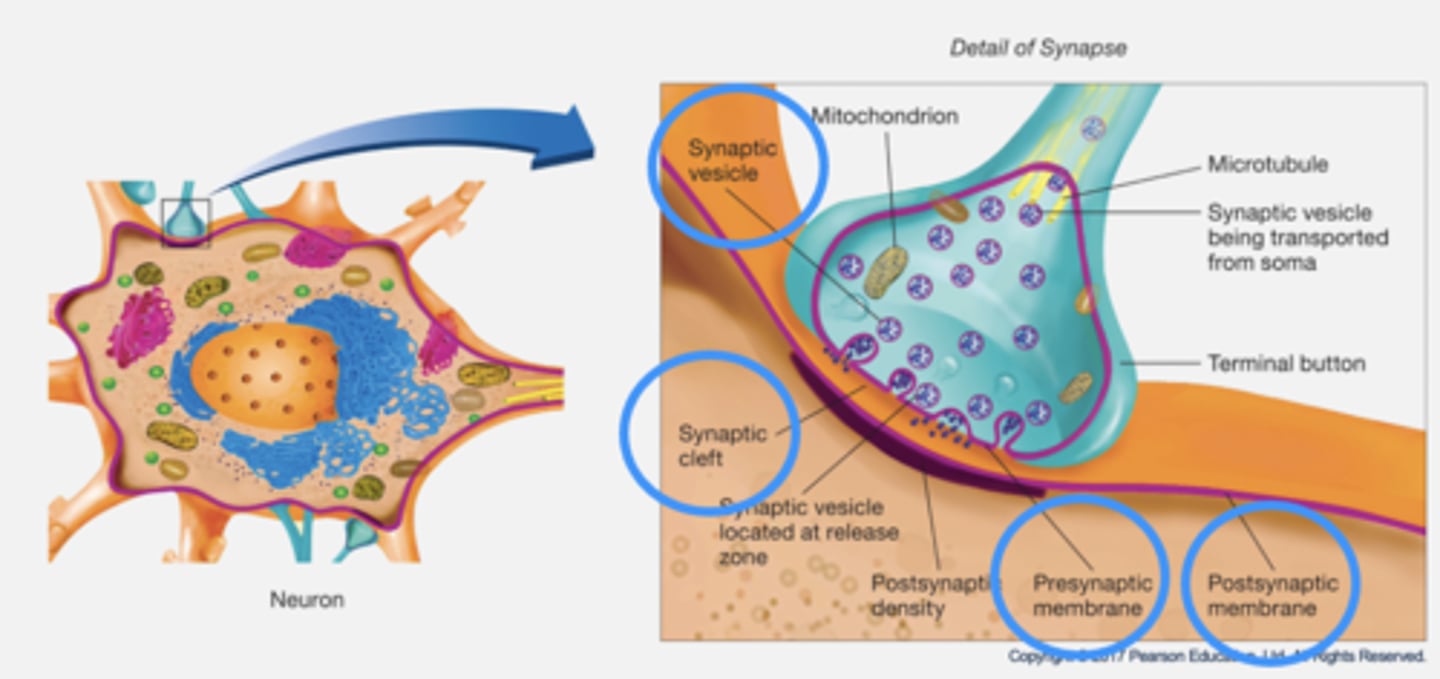
Synaptic transmission
1. AP at terminal button.
2. Calcium (Ca) channels open and Ca2+ enter and bind with protein embedded in membrane of vesicles.
3. Vesicles fuse with membrane and fusion pores open.
4. NT released into synaptic cleft.
5. NT diffuses and binds to postsynaptic membrane.
6. Ions flow and results in either excitatory or inhibitory PSP.
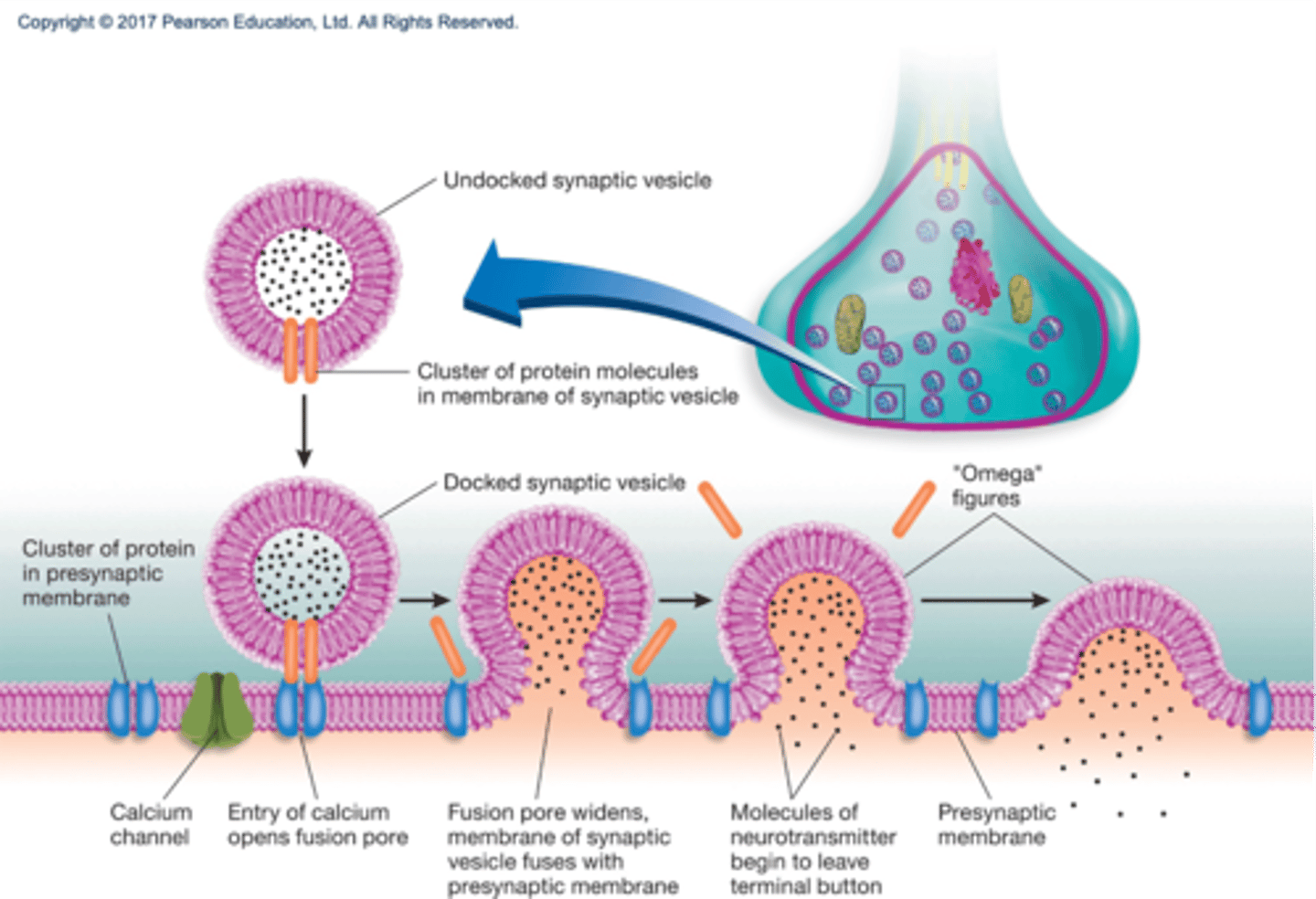
Binding
NT binds to binding site on postsynaptic membrane (lock and key).
- NT diffuses across cleft and alters PSP.
- NT attaches to binding site of receptor.
- Specific NT binds to specific binding site → this opens an ion channel.
- PSP depends on which channel opened.
- Na+ channels opened → Na+ enters → depolarisation = EPSP.
- K+ channels opened → K+ leaves → hyperpolarisation = IPSP.

Ionotropic receptor
- Contains a binding site and ion channel.
- Opens when molecule attaches to binding site.

Metabotropic receptor
- Contains binding site.
- Initiates chain reaction that eventually opens ion channels → requires energy.
- PSPs slower than those produced by ionotropic receptors.
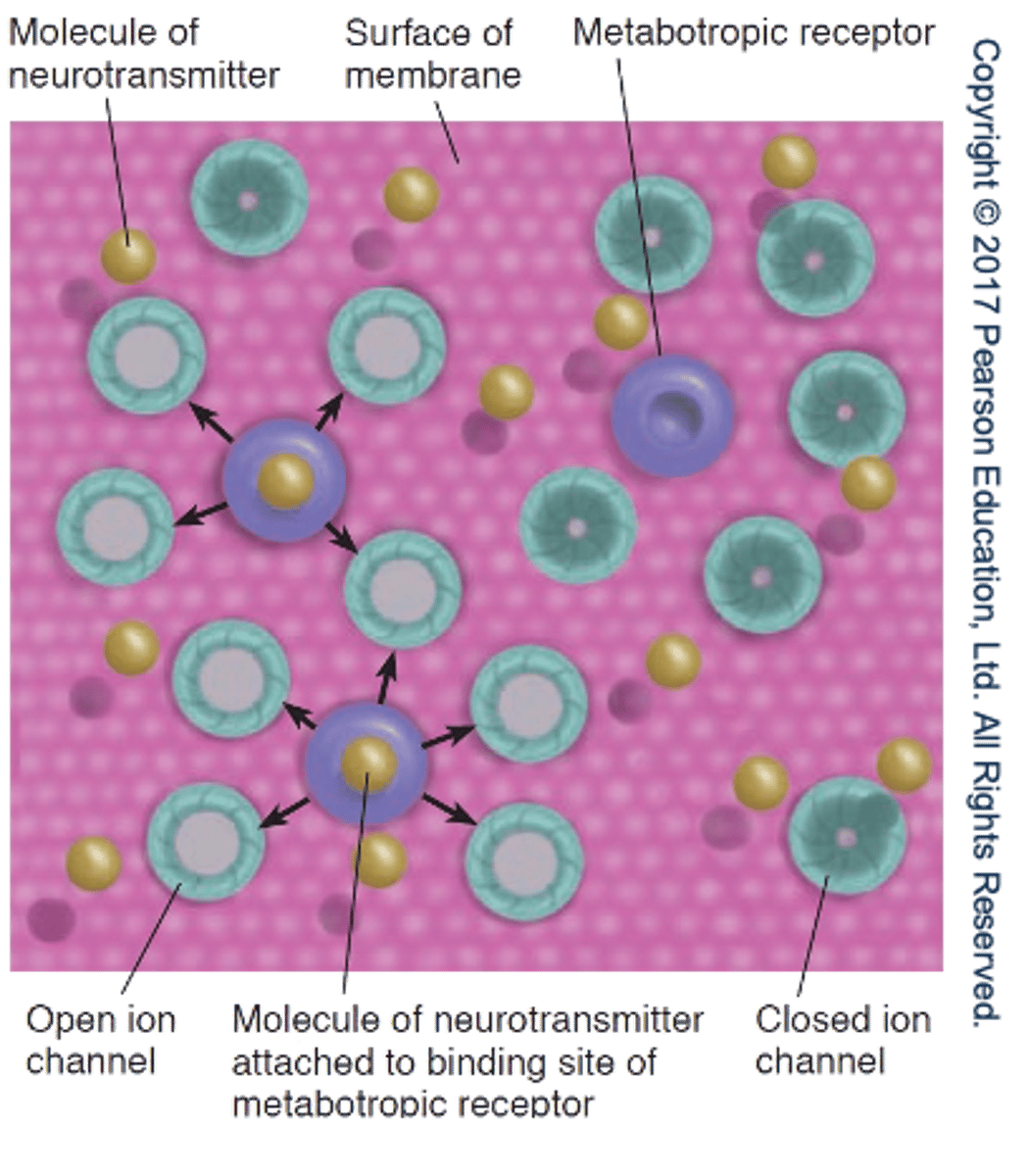
Reuptake
Transmitter taken back by presynaptic terminal via transporter molecules.

Enzymatic deactivation/degradation
Transmitter broken down by enzyme.
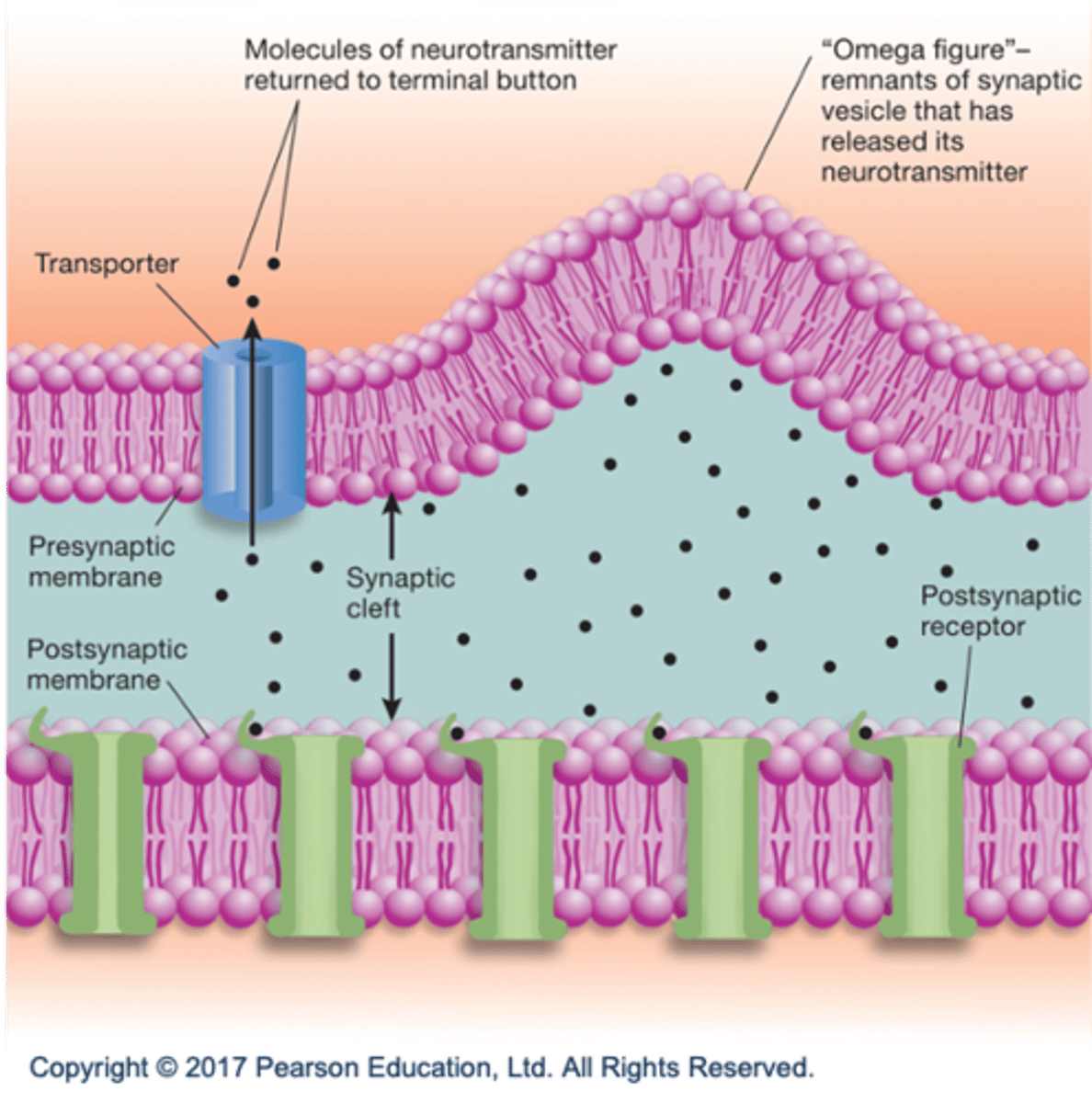
Neural integration
- Excitatory: increases likelihood of neuron firing (AP being produced) → 'yes'.
- Inhibitory: decreases likelihood of neuron firing → 'no'.
- Integration: summation of PSPs in control of neuron firing.
EPSPs do not always produce a behaviour; IPSPs do not alwyas inhibit behaviour.
- Inhibition of inhibitory neurons = more likelihood of behaviour.
- Excitation of inhibitory neurons = less likelihood of behaviour.
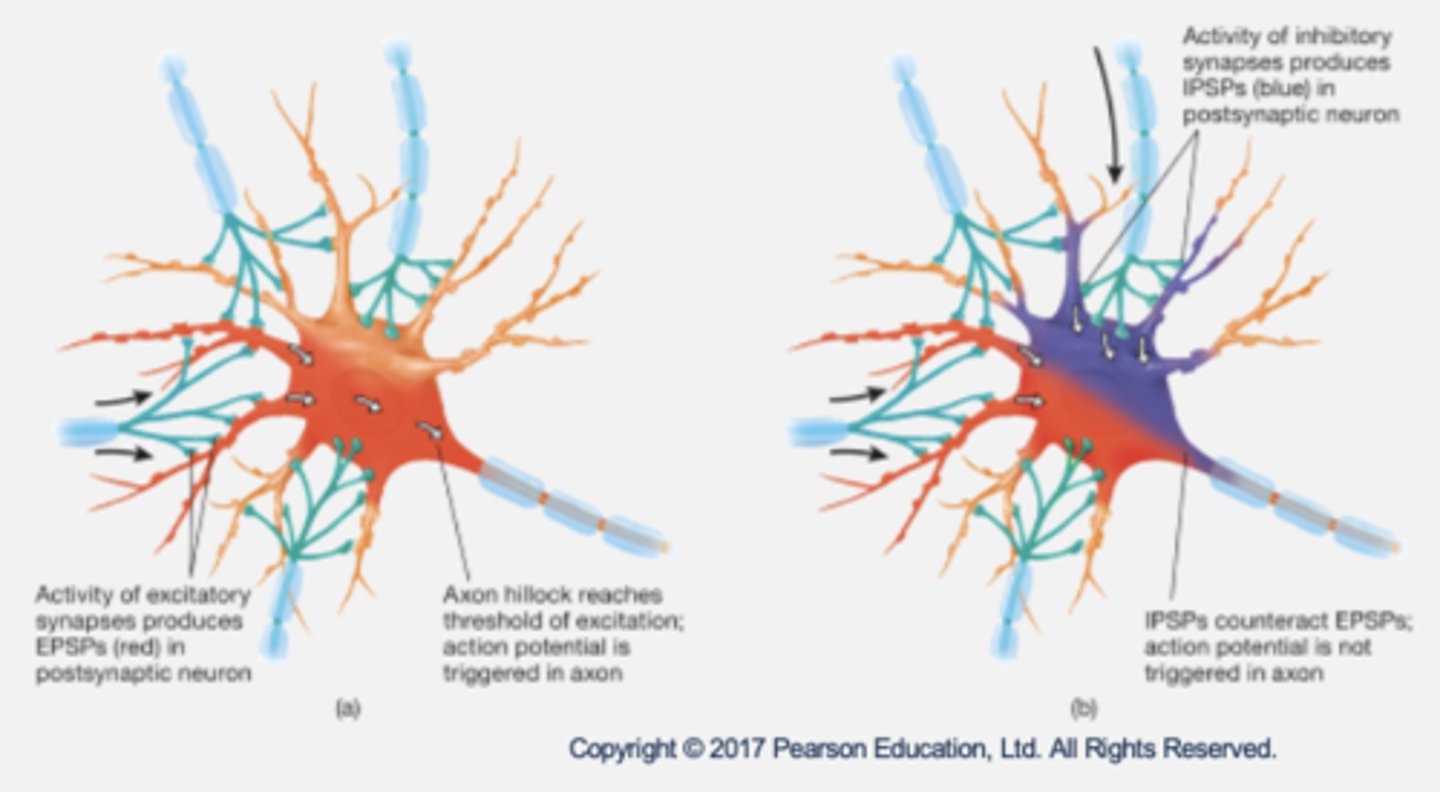
GABA (gamma-aminobutyric acid)
- A major inhibitory NT.
- Works to inhibit neural signalling.
- If GABA inhibits cells too much, can lead to seizures and other problems.
- Plays important role in brain development.
Glutamate (GLU)
- Most excitatory NT in the cortex.
- Too much can result in excitotoxicity/death of neurons due to stroke etc.
- Excitement GLU brings important to learning and memory.
Acetylcholine
- First NT discovered.
- Direct action small-molecules that works primarily in muscles helping to translate intentions into actual actions and signals passed from neurons to muscle fibre.
Serotonin (5HT)
- Best known for mood modulating effects.
- Lack of 5HT linked to depression and related neuropsychiatric disorders.
- Implicated in helping to manage appetite, sleep, memory and decision-making behaviours.
Dopamine (DA)
- Released when mammals receive a reward in response to their behaviour.
- Involved with motivation, decision-making, movement, reward processing, attention, working memory and learning.
- Plays important role in Parkinson's disease, addiction, schizophrenia and other disorders.
Drugs and neurotransmitters
Antagonist:
- Drug that blocks NT.
- Botox (botulinum toxin) blocks release of acetylcholine and prevents muscle contraction so paralyses muscles.
Agonist:
- Drug that mimics NT and enhances synapse function.
- Muscarine (naturally occurring in mushrooms) imitates acetylcholine.